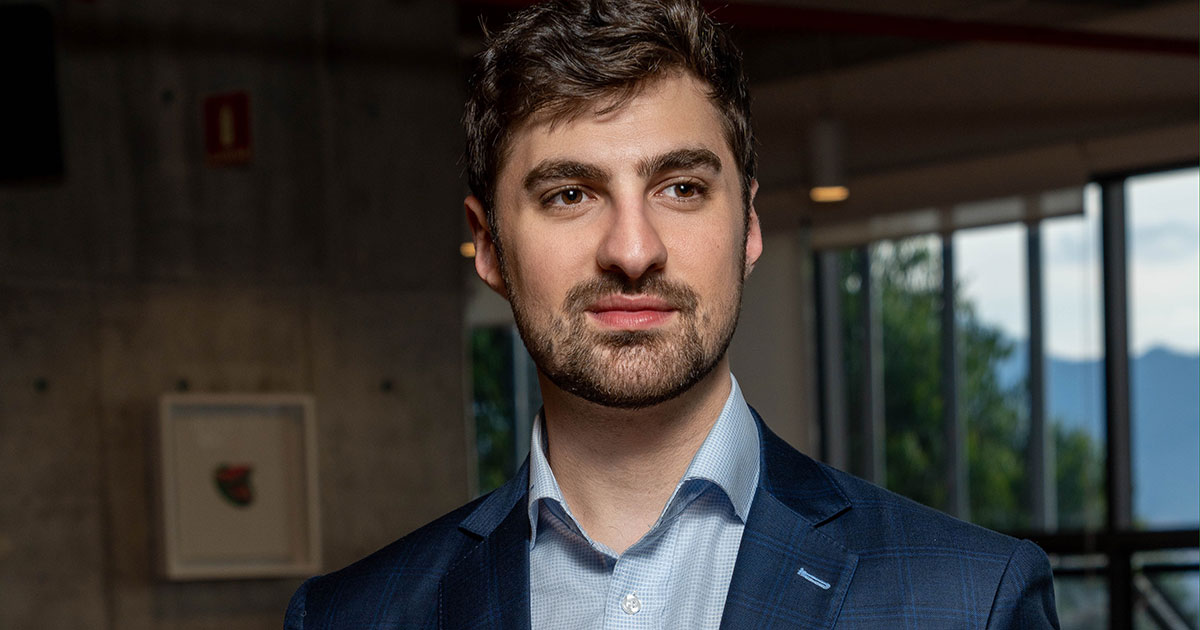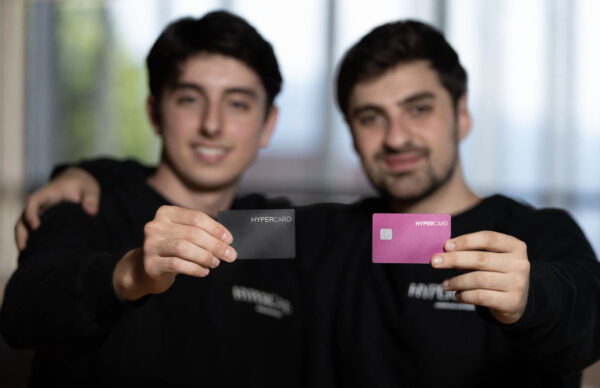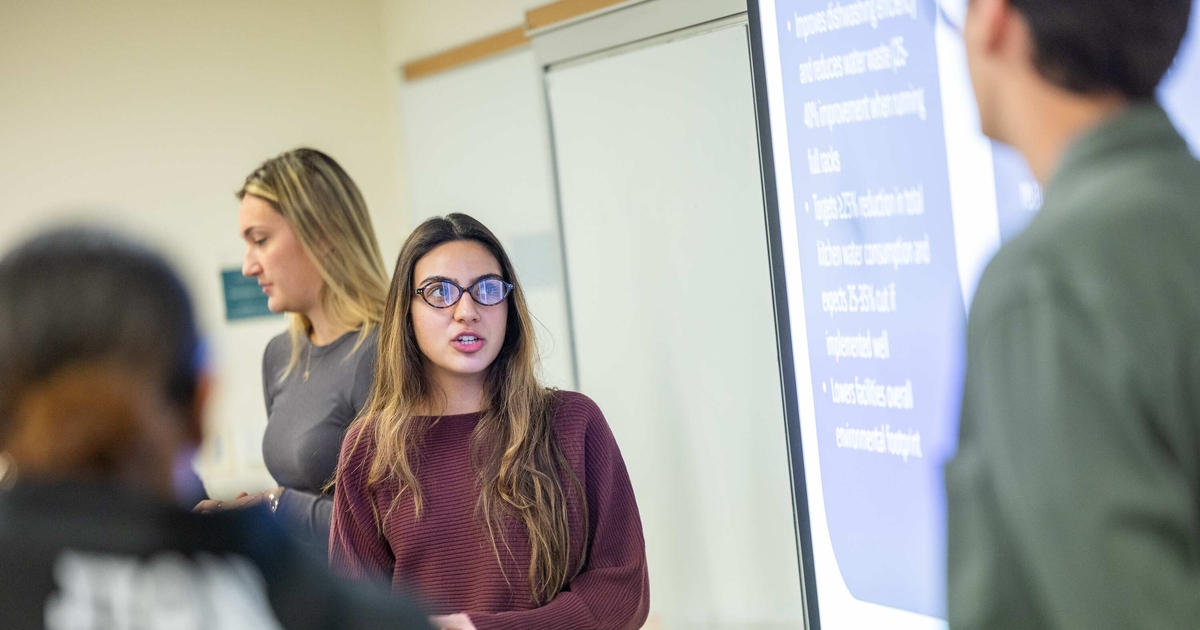One Babson Entrepreneur’s Story: Forbes 30 Under 30 2024

He is one of the biggest names in tech, a person much in the news lately. To land him as an investor is no easy task.
And yet, when OpenAI’s Sam Altman met with entrepreneur Marc Baghadjian ’21 and his co-founder, Nikolas Ioannou, he was immediately intrigued. Altman became the lead investor for their venture, Hypercard, a consumer credit card issued by companies as a perk for their employees. “We are very lucky to have partnered with him to build this vision,” Baghadjian says, “and it has truly changed our trajectory for the better.”
Baghadjian and Ioannou were recently named to the prestigious Forbes 30 Under 30 2024 list for North America. The list also includes Arjun Bhatnagar ’17, who co-founded Cloaked, a groundbreaking startup meant to boost consumer privacy. Two other young entrepreneurs with Babson ties, Matthew and Michael Vega-Sanz of software startup Lula, twin brothers who had attended the College before dropping out to pursue entrepreneurship, also were named to the Forbes list.
“I’m very happy and proud to be on that list,” Baghadjian says. “I think Forbes is the epitome of an entrepreneurial publication.”

Baghadjian, who is 24, and Ioannou, who is 20, made the Forbes list in two categories: Finance and Youngest. They have raised $4.5 million (half of which was invested by Altman) for Hypercard so far, and Lyft and Whatnot are among the companies they are working with on company credit cards. Hypercard’s credit cards are part of the American Express network.
Hypercard is not Baghadjian’s first startup. While a student at Babson, he founded Lolly, a dating app that utilized videos. He closed it in 2022, not long before co-founding Hypercard. “I’ve actually really enjoyed building and seeing things come to life,” he says.
From New York City, where he lives, Baghadjian took time to answer questions about his entrepreneurial journey, about what the Forbes list means to him, and about how he came up with the idea of Hypercard.
What has been the reaction to you making the Forbes 30 Under 30 2024 list?
“People want to celebrate with you. When they take the time, and say, ‘Hey, I’m celebrating with you,’ it goes a long, long way. It’s like a birthday. A birthday is so special, not because it’s my birthday, but because I hear from so many people that I love.
“In entrepreneurship, you’re kind of on your own. You spend hours tinkering, building, with no guarantee of success. It’s a lot of chaos. In just a brief moment, to stop on a buoy in the middle of the ocean, and have people clap you on, tell you to keep going, keep swimming, it means a lot. I’m really happy to have so many wonderful people who believe in us.”
Before Hypercard, you founded Lolly. Why did you decide to close it?
“I spent four-and-a-half years building Lolly. It all started in my room in Park Manor West. I had raised $2-and-a-half million, actually closer to $3 million.
“I was pushing a boulder up a mountain at one point because my product was not going insanely viral. I wasn’t able to get there. I spent a million-and-a-half dollars on building, launching, marketing. It wasn’t exploding. I did many iterations of the product. I changed it a lot. Four-and-a-half years is a long time to build something. It wasn’t getting there.
“I was not rushed to launch a new idea. An initial iteration just came to me one morning at 3:59 a.m.”
Marc Baghadjian ’21, co-founder of Hypercard
“The last six months of Lolly, I was looking for a buyer and we found a couple really big companies that wanted Lolly, but they expected me to go work there for four years. And the numbers didn’t make sense. I determined that the best thing to do was not do a sale. It was to shut it down and return the capital back to the investors. Shut it down nice and clean.
“I wired back close to half of the money to investors. They said, why don’t you keep going? I said trust me. This is the best thing I can do with your money. It’s been four-and-a-half years. I decided it was best to do something else.”
That may have been the right decision, but it couldn’t have been an easy one.
“It was really hard. Too much of my identity was attached to Lolly. So, when it failed, I kind of had a difficult ego death. I was really hurt. I had all this success. I had the best investors, I had a great team, and I had a good product. But I couldn’t make the thing go viral.
“I sulked for a long period of time. It took me like six months of sulking. I just went to my dad’s house, and I hung out. It was kind of nice having no obligations and no company. When you start a company, you’re locked in on that roller coaster. You can’t get off. It was nice being free for six months. I took time to just sulk and do nothing and go back to the drawing board.”
How did Hypercard come about?
“I was not rushed to launch a new idea. An initial iteration just came to me one morning at 3:59 a.m. I had this concept for Hypercard, and I brought it to my now co-founder, and he cleaned it up and polished it with me. And it kind of went from there.
“I love credit cards. I love Diners Club. I love Amex. I’ve always had an infatuation with American Express. It’s a really cool company. And I built credit to get an American Express card. Because it’s not really a credit card. It’s more of a membership experience that you get that’s housed in a credit card vehicle. The same thing with Diners Club. Diners Club did it right. They did it first. Diners Club back in the day was like, make your way around the world with Diners Club. It was like the first membership experience built on a credit card.
“I had this thesis—what if I can bring the American Express experience to companies? What if you could make a credit card or debit card that’s attached to companies? And you house all their perks and benefits on it. At 3:59 in the morning, I’m texting my partner. I literally have the text transcripts.”
Posted in Entrepreneurial Leadership, Outcomes






